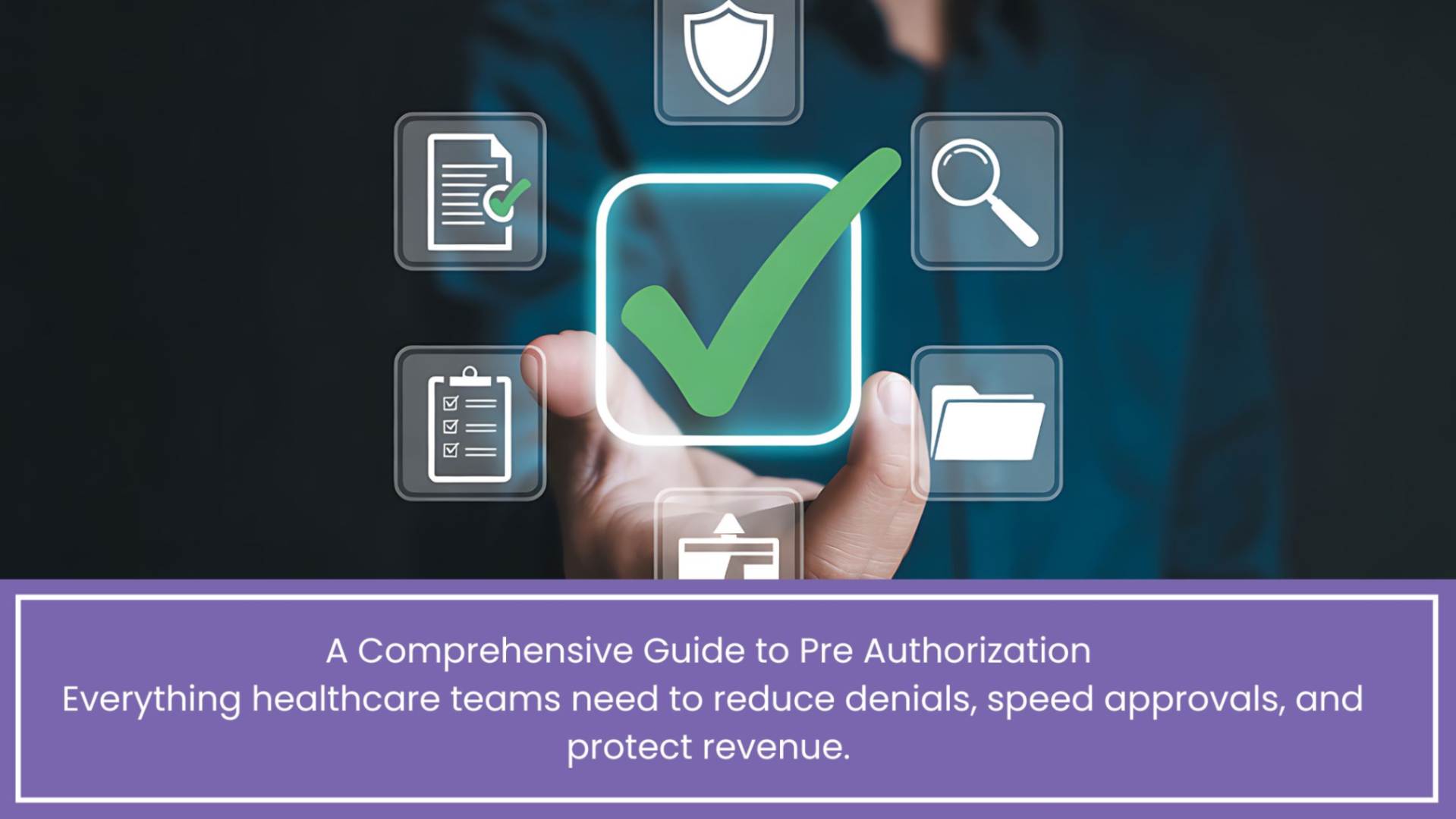Medical Coding and Billing for Chronic disease Management
If there’s one thing reshaping healthcare today, it’s the shift from fee-for-service to value-based care. For providers managing patients with medical coding and billing for chronic disease management conditions, this shift isn’t just a change in reimbursement—it’s a complete rethinking of how care is documented, coded, billed, and financially sustained. And here’s the kicker: if your revenue cycle management (RCM) strategies don’t evolve alongside it, even the best clinical outcomes can leave your practice struggling to keep the lights on.
At Practolytics, working with 1400+ active providers across 31 states, we see firsthand how practices can thrive in this new model. Let’s take a closer look at the nuances of RCM in value-based care, especially for chronic disease management, and why coding, billing, and operational efficiency now sit at the very center of patient and practice success.
Table of Contents
Why Chronic Disease Management Is the True Test of Value-Based Care?
Chronic diseases—think diabetes, hypertension, COPD, and heart disease—account for 90% of the nation’s $4.5 trillion annual healthcare spending (CDC, 2023). In a fee-for-service world, each appointment or procedure generates revenue. In value-based care, the financial model flips: practices are rewarded for improving outcomes, lowering readmissions, and coordinating care.
This means managing chronic conditions isn’t just about medical expertise—it’s about continuous engagement, predictive analytics, and airtight documentation. Every missed code, every unbilled encounter, and every gap in care can directly reduce revenue. It’s not an exaggeration to say: in chronic care, your RCM is as important as your stethoscope.
Coding Challenges No One Warned You About!
Medical Coding Services for chronic disease management in value-based models isn’t straightforward. Fee-for-service codes often fail to capture the intensity of care coordination, remote patient monitoring, and team-based interventions that value-based contracts demand.
Here’s where many practices stumble: they document clinical work but fail to translate it into the right coding language. For example:
- A provider spends 40 minutes on care coordination calls and follow-ups. Unless that’s properly coded under Chronic Care Management (CCM) or Principal Care Management (PCM), it’s lost revenue.
- A patient’s diabetic eye exam, done by an outside provider, goes undocumented in the practice EHR. The result? Quality scores drop, and so does reimbursement.
In essence, coding becomes a bridge between what you deliver clinically and what you earn financially. And that bridge is surprisingly fragile.
Fee-for-Service vs Value-Based RCM in Chronic Disease Care
If you’ve ever felt like billing under today’s rules doesn’t look anything like what you learned years ago, you’re not imagining it. Fee-for-service and value-based care don’t just operate on different playbooks—they play entirely different games. One is all about how much you do, while the other is all about how well you do it. The table below makes the contrast pretty clear.
|
Aspect |
Fee-for-Service (Traditional) |
Value-Based Care (Modern RCM) |
|
Revenue Trigger |
The old way was simple: more visits, more tests, more procedures meant more money. It didn’t really matter if the patient actually got better. |
Now, it’s about results. Practices earn by improving outcomes, hitting quality benchmarks, and coordinating care that keeps patients healthier. |
|
Coding Priority |
You just had to code the diagnosis or the procedure for that specific visit. As long as it matched the service, you got paid. |
Today, coding goes deeper. You have to capture risk levels, chronic care management (CCM), principal care management (PCM), and even remote monitoring (RPM) to show the full picture. |
|
Documentation Focus |
Notes were mostly about that one appointment—what was said, what was done, and that was enough. |
Now, you have to tell the whole patient story. From follow-ups and preventive screenings to coordination with specialists—it all has to be tracked. |
|
Financial Risk |
The payer carried the burden. Even if the patient didn’t improve or came back often, providers still got reimbursed. |
Providers now share the risk. If outcomes aren’t good or costs are high, revenue takes a hit. But if patients do better, practices earn bonuses and shared savings. |
|
Role of RCM |
RCM used to be a back-office job: submit the claim, fix denials, move on. |
RCM now sits at the strategy table. It helps capture risk, make sure coding is complete, and keeps quality reporting in sync so practices don’t miss incentives. |
See the difference? Under fee-for-service, the idea was pretty simple: document the visit, code it right, and send the bill. The risk wasn’t really yours—it was on the payer. But value-based care flips that on its head. Now, it’s about tracking the entire patient journey, proving outcomes, and sharing the financial risk. RCM stops being just a back-office cleanup job and instead turns into your partner in strategy. For chronic disease care, that means keeping a constant eye on coding accuracy, risk adjustment, and care coordination. If you don’t, it’s not just a missed claim—it’s missed revenue, missed incentives, and potentially missed opportunities to keep your patients healthier.
Risk Adjustment Tightrope
One of the most complex elements of coding in value-based care is risk adjustment. Accurate risk scores (like HCCs—Hierarchical Condition Categories) determine how much payers reimburse you for managing complex patients. A missed comorbidity code can reduce your reimbursement by thousands of dollars annually, even if you’re delivering excellent care.
Here’s the reality: CMS and private payers expect every chronic condition to be captured and updated annually. Yet studies show that up to 20% of chronic conditions go undercoded, which leads to underpayment and underestimation of patient risk. That’s lost revenue you may never get back.
Practices that succeed in value-based care often have dedicated teams ensuring every diagnosis, every comorbidity, and every chronic condition is not just treated, but also properly documented and coded.
Data Is the New Currency!
In value-based care, RCM isn’t only about billing—it’s about data stewardship. Payers evaluate you on patient outcomes, cost efficiency, and compliance with quality measures. That requires a steady flow of clean, accurate, and complete data.
Here’s what this means for RCM in chronic disease care:
- Integration matters: Lab results, hospital discharge summaries, and outside specialist reports need to flow into your system seamlessly.
- Analytics drive revenue: Predictive analytics can flag patients at risk of readmission or non-compliance, allowing proactive outreach that improves both outcomes and reimbursements.
- Denials become insights: Instead of just appealing denials, practices must analyze trends. Are codes being rejected because of poor documentation? Is a payer consistently downcoding? Each denial holds a story about your system’s weaknesses.
Why Billing Feels Harder Than Ever?
Providers often tell us that billing in value-based care feels like “playing a game where the rules keep changing.” They’re not wrong.
Consider this: under chronic care models, billing isn’t just about one encounter. It includes time-based codes, team-based activities, remote monitoring, patient education, and care coordination. Each of these comes with strict billing requirements:
- Time thresholds must be met and documented.
- Patient consent may need to be obtained and recorded.
- Care plans have to be shared with the patient.
Miss a single compliance checkbox, and the claim gets denied—or worse, you’re exposed to audits.
That’s why many practices are rethinking billing not as a back-office function but as a clinical partner. It’s no longer enough to “clean up” after the fact. Billing needs to be embedded in workflows, supporting clinicians in real time.
Financial Stakes You Can’t Ignore!
Value-based contracts promise shared savings and bonus incentives. But they also carry financial penalties if quality targets aren’t met. For chronic disease management, this means:
- A missed blood pressure follow-up can cost a bonus.
- Poor medication adherence tracking can lower your quality score.
- Failure to document smoking cessation counseling in COPD patients can lead to revenue loss.
This isn’t hypothetical. According to a recent report, practices in Medicare’s value-based models saw up to 15% revenue swings based on coding accuracy and care documentation alone. That’s a margin most practices simply can’t afford to gamble with.
Outsourcing RCM: Why It’s No Longer Optional?
Here’s the part where most practices realize the obvious: navigating value-based care while running a clinic is overwhelming. Between keeping patients engaged, managing complex billing, staying compliant, and fighting denials, something inevitably slips through the cracks.
That’s why many providers now turn to outsourcing RCM. But here’s the catch: not every billing partner is equipped for value-based care. You need a partner that understands risk adjustment, chronic care codes, and payer quality metrics.
At Practolytics, this is exactly where we specialize. With 20+ years of experience, 5M claims processed annually, and 100% HIPAA compliance, we help practices move beyond survival mode. Our teams don’t just submit claims—we partner with providers to:
- Capture every eligible code, especially in CCM, PCM, and risk adjustment.
- We help practices integrate data flows across specialties and care settings, closely track quality metrics to capture every incentive, and minimize denials or compliance risks before they impact your bottom line.
For practices handling chronic disease care under value-based contracts, outsourcing isn’t about cutting expenses—it’s about safeguarding revenue and ensuring sustainable growth. The organizations that excel are those that see RCM not as a back-office chore but as a strategic partner in long-term success.
Final Thoughts:
Value-based care has transformed expectations for every provider. In chronic disease management, the challenge is clear: deliver better outcomes while proving that value through precise coding, accurate documentation, and compliant billing. This is where RCM moves from background support to a central driver of both clinical and financial performance.
At Practolytics, we believe the future of healthcare isn’t about choosing between patient care and financial health. It’s about aligning both—and building systems where great care is always rewarded with sustainable revenue.
Because in the world of chronic care, your RCM isn’t just about claims—it’s about keeping your practice alive, thriving, and ready for the next challenge.
ALSO READ – Decoding CPT: Your Guide to Codes and Regulations 2024
Talk to Medical Billing Expert Today — Get a Free Demo Now!






